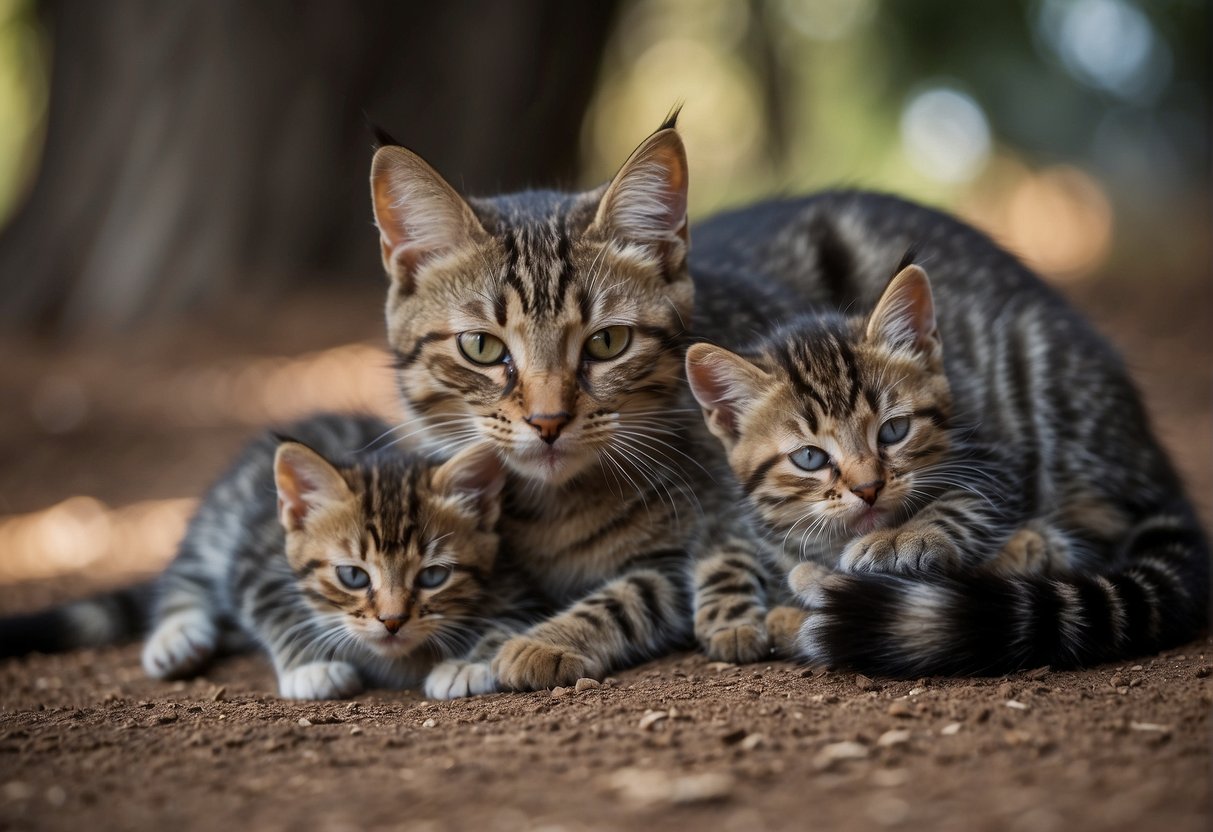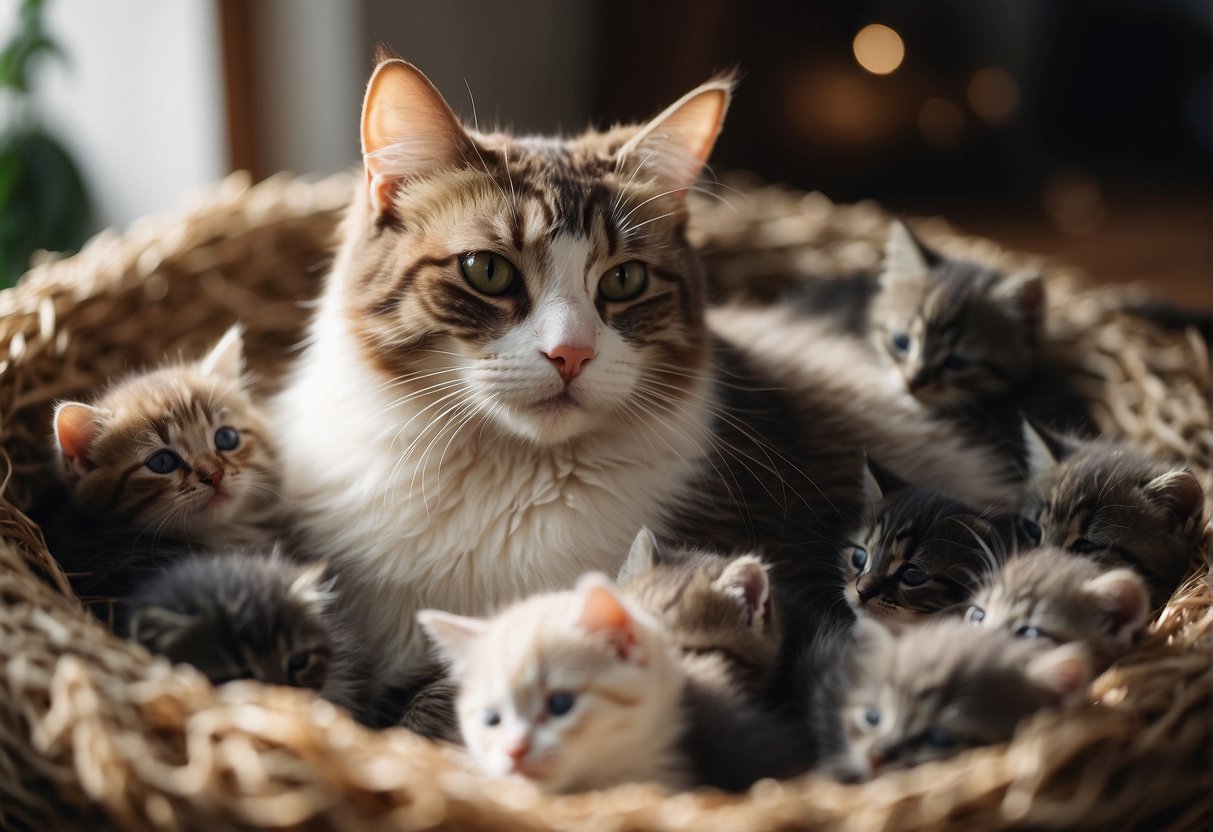Cats typically bleed for a short period after giving birth, with normal postpartum bleeding lasting anywhere from a few days to two weeks. You may notice this bleeding, known as lochia, as your feline friend goes through the stages of motherhood.
It’s perfectly normal to see a few drops of blood or a bloody discharge from the birthing process, similar to what you might observe with humans during their recovery period after delivery.

During this postpartum period, you’ll want to keep an eye out for the color and consistency of the discharge. It usually starts off as a bright red and gradually changes to a pinkish hue, then to brown, as your cat heals.
This change in color reflects the natural healing progression, reminiscent of when you may have tended to a wound or monitored a healing process in pets or even in yourself. It’s essential, however, to be vigilant for signs of excessive bleeding, an indication that something more serious might be at play and a vet visit would be necessary.
Understanding Postpartum Bleeding in Cats

Caring for your cat after birth is crucial, and part of that is understanding the normal postpartum processes, including bleeding. These aspects are key in ensuring your fur baby stays healthy.
Normal Postpartum Discharge
Postpartum bleeding, or lochia, is your cat’s natural way of expelling tissues and fluids that were needed during pregnancy. This discharge may start as a bright red color and then turn into a darker, brownish shade as the days progress. It’s similar to the process you may have seen if you’ve ever been around a new mother of any species.
Duration of Bleeding After Birth
The duration of postpartum bleeding in cats typically lasts for about two to three days, but it can extend up to six weeks in varying amounts. The bleeding is usually heaviest in the first few days post-delivery.
| Timeframe | Color of Discharge | Notes |
|---|---|---|
| Day 1-3 | Bright red | Heaviest flow, monitor for excessive bleeding |
| Week 1-2 | Pinkish | Flow reduces, turns pink |
| Week 3-6 | Brownish | Discharge tapers off, darker color |
Should You Be Concerned If the Bleeding Persists?
A small amount of discharge during the postpartum period is normal. However, if you notice that the bleeding is excessive or continues heavily after the initial few days, it’s time to contact your vet. Excessive blood loss can be a sign of complications like retained placentas or infection, which need professional care for your cat’s health.
Monitoring Maternal Health
After your cat has given birth, it’s crucial to closely monitor her health to ensure a smooth postpartum period. Pay particular attention to the amount and type of bleeding she experiences, as well as any signs of potential health complications that might arise.
Signs of Complications
Your mother cat will naturally experience some bleeding after giving birth, typically for two to three weeks. This bleeding should gradually decrease without a foul odor.
However, excessive bleeding or an increase in bleeding, abnormal bleeding, such as large blood clots, or any discharge with a foul odor, could indicate complications. Keep an eye on her body temperature and general behavior; if she seems lethargic or shows a lack of interest in her kittens, these may be signs of infection or other health issues.
When to Contact Your Vet
You should reach out to your vet if:
- The bleeding hasn’t subsided or has become excessive, indicating a potential postpartum hemorrhage.
- You notice any significant changes in her behavior or energy level, suggesting she might be in pain or suffering from complications.
- You detect a foul-smelling discharge, which could be a sign of infection.

My name is James, and welcome to FAQCats!
Along with our team of cat owners, expert pet enthusiasts, and pet professionals, we aim to write engaging helpful, engaging content about cats. At FAQCats we strive to provide content that’s accurate and fun to read. Our team writes about everything related to cats; even the most complex of topics. Through extensive research and caring for our own fur-pals, we’re able to provide something cat owners worldwide will love. Have a look around, and leave us feedback anytime!

